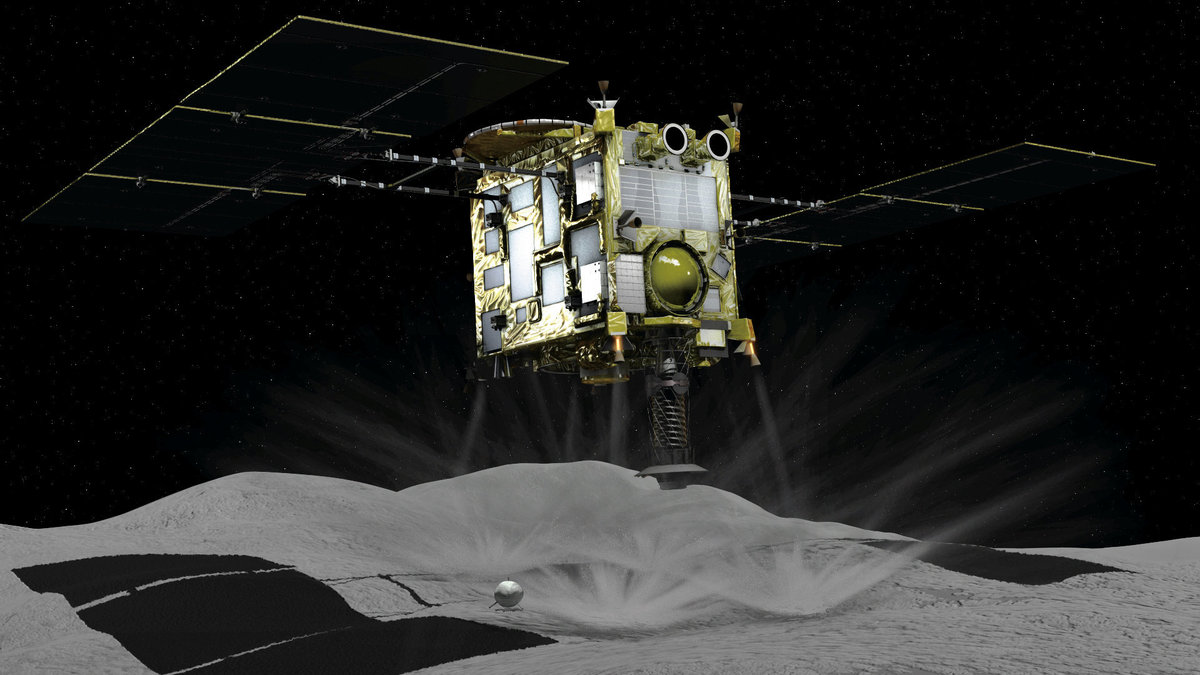Japan's Hayabusa2 space probe successfully lands on asteroid, starts collecting samples
Xinhua | Updated: 2019-02-22 14:57

TOKYO -- Japan's Hayabusa2 space probe successfully landed on the asteroid Ryugu and began collecting rock samples, the Japan Aerospace Exploration Agency (JAXA) confirmed Friday.
JAXA said it began receiving data from the probe at around 8:00 am local time on Friday (2300 GMT Thursday), following the probe's descent beginning around 1:00 pm local time (0400 GMT) a day earlier to the asteroid from an altitude of 20,000 meters.
A JAXA official was quoted Friday as saying the Hayabusa2 space probe made the "best touchdown" possible.
The space agency said the probe, an hour before its touchdown, changed to its autonomous landing mode at an altitude of 500 meters above the asteroid.
The probe, in this phase of its descent, uses its own sensors to judge its position and adjust and guide itself to hit its landing spot, JAXA said.
The descent was initially delayed by a few hours while the final approach to the asteroid's surface was confirmed, JAXA said, adding that to make up for the time lost, the pace of the descent was sped up.
The probe is now beginning to collect rock samples from Ryugu's surface, according to JAXA.
It contains a device that has fired bullet-like objects into Ryugu's rocky surface and sucked up the resulting debris to bring back to Earth to be examined, JAXA said.
Once all its sample collection duties are complete, which JAXA said will be a speedy process, it will take the Hayabusa2 space probe about 11 hours to return to its "home position" above the asteroid.
The initial touchdown on the asteroid was postponed in October last year, as JAXA found the surface of the asteroid, which is about 300 million km from Earth and 900 meters in diameter, to be rockier than it first thought and needed more time to ensure the safe landing of the probe.
The Hayabusa2 space probe arrived above the asteroid in June last year.
On Oct 3, Hayabusa2 released a small-sized Mobile Asteroid Surface Scout, also known as MASCOT, which touched down successfully on the asteroid.
Prior to that, two small robotic rovers also launched from Hayabusa2 successfully landed on Ryugu on Sept 22.
The rovers have been taking images of the asteroid and performing other functions such as measuring its surface temperature.
JAXA said the images of Ryugu captured by the robots initially revealed a cluster of bumpy rocks and a lack of flat surfaces for the main probe to land on.
The agency since located a flat area near Ryugu's equator that is free of rocks larger than 60 cm, it said.
The scientists, according to JAXA's data, landed the probe on a far smaller landing area than originally planned.
The landing zone near the equator was 6 meters in diameter, JAXA said.
The 600-kg Hayabusa2, which was launched from the Tanegashima Space Center in southwestern Japan in December 2014, has experienced no problems up until now, throughout its journey totaling 3.2 billion km.
The agency said in total, Hayabusa2 is scheduled to make three landings on the asteroid and collect rock samples and will stay close to Ryugu for one and a half years.
During this time, it will conduct a number of exploratory activities in an attempt to find clues about the solar system's evolution and possibly the beginning of life itself.
Hayabusa2's mission will be completed when it returns to Earth in 2020 with the samples of rocks it has collected from Ryugu, which is thought to contain water and other materials that could possibly support life.























